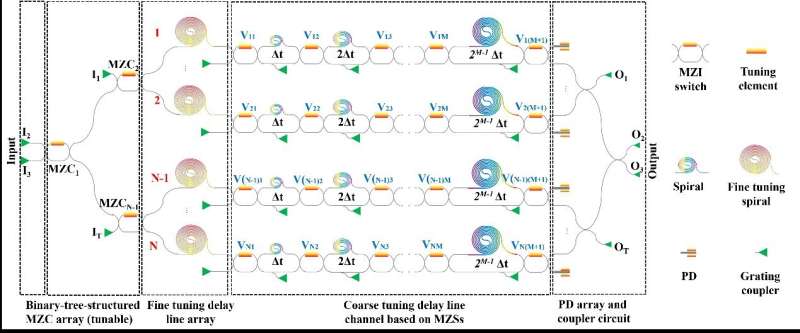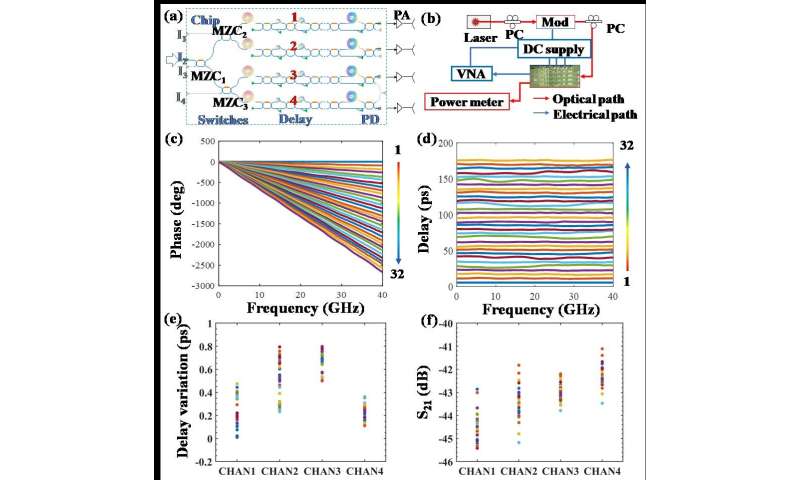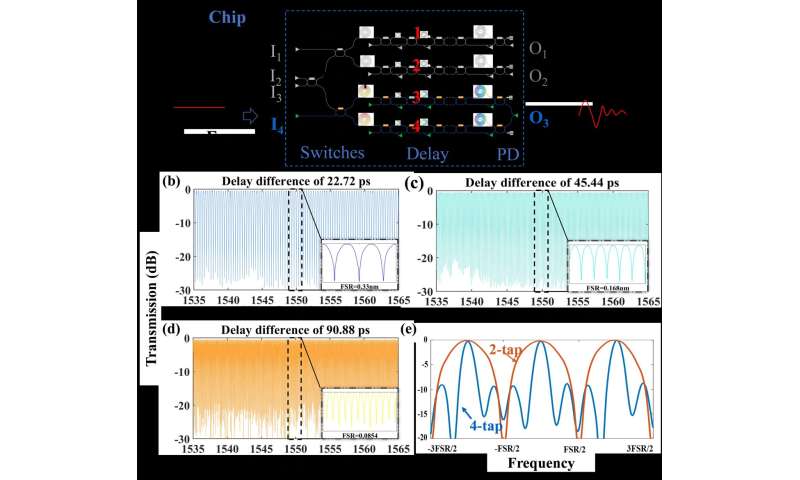Low-loss, chip-scale programmable silicon photonic processor

A new publication from Opto-Electronic Advances discusses low-loss chip-scale programmable silicon photonic processors.
Integrated optical signal processors have been identified as a powerful engine for optical processing of optical signals. They enable wideband and stable signal processing operations on miniaturized chips with ultimate control precision. Currently, there is a significant interest in providing functional reconfigurability, to match a key advantage of programmable microelectronic processors.
To implement large-scale programmable PICs with a large number of tuning elements, the challenge is to lower the loss of silicon photonic waveguides and minimize the random phase errors caused by the fabrication imperfection for the phase-shifters of those tuning elements.
The authors of this article propose a high-performance programmable silicon photonic processor by introducing low-loss multimode photonic waveguide spirals and low-random-phase-error Mach-Zehnder switches. These waveguide spirals are designed to be as wide as 2 µm, enabling an ultralow propagation loss of 0.28 dB/cm, which is much smaller than the traditional silicon waveguide (2-3 dB/cm).
-

(a) Realization of 4-channel OTTDL based photonic beamformer (Input from port I2, and output from four PDs). Here light goes along the blue paths, and there is no light in the grey paths; (b) Experimental setup. Measured phase response (c) and group delay response (d) of the microwave signals for all 32 delay states of the first channel of delay line. The delay variations (e) and the measured S21 (f) for all four channels at 18 GHz. PC: polarization controller, Mod: modulator, VNA: vector network analyzer. Credit: Compuscript Ltd -

Principle of arbitrary filtering operation (Input from port I4, and output from port O3). Measurements of filter spectral responses: (b)-(d) demonstrations of the FSR tunability for the filter; (e) demonstrations of passband shaping for the filter. Credit: Compuscript Ltd
Meanwhile, these MZCs and MZSs are designed with 2-µm-wide arm waveguides, and thus the random phase errors in the MZC/MZS arms are negligible, in which case the calibration for these MZSs/MZCs becomes easy and furthermore the power consumption for compensating the phase errors can be reduced greatly. In addition, each channel has a Ge/Si photodetectors and grating coupler to detect the signal.
By programming the device, this programmable silicon photonic processor is demonstrated successfully to verify a number of distinctively different functionalities, including tunable time-delay, microwave photonic beamforming, arbitrary optical signal filtering, and arbitrary waveform generation.
More information: Yiwei Xie et al, Low-loss chip-scale programmable silicon photonic processor, Opto-Electronic Advances (2022). DOI: 10.29026/oea.2023.220030
Provided by Compuscript Ltd




















